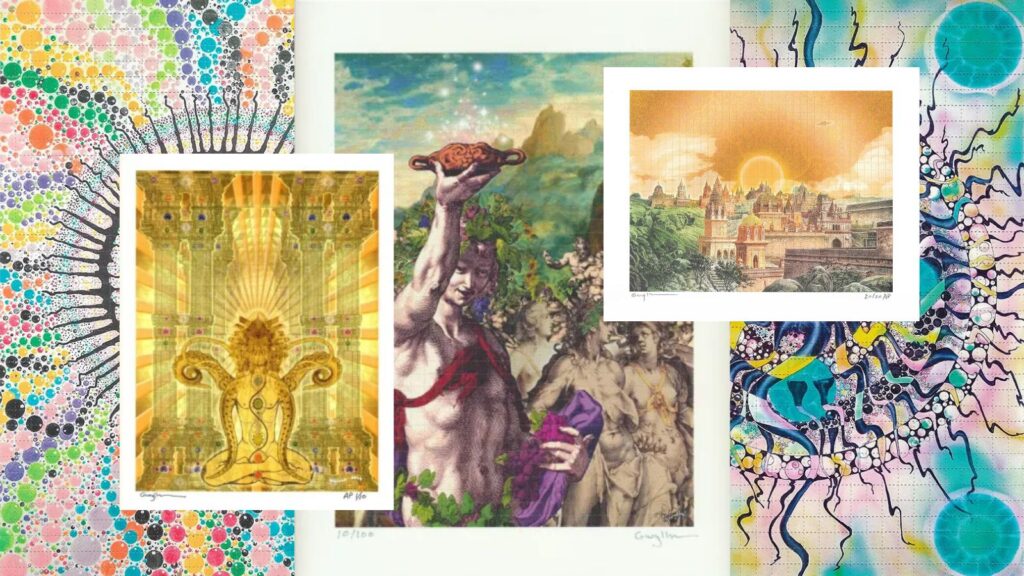[Terra Nova] • This past October I received a strange message from a name I did not know, Tino Sehgal. He told me he was organizing an event at the Marion Goodman Gallery, a prestigious space in midtown New York, which would be comprised of a group of philosophers and theorists discussing the state of our society, technology, relationships, and the future. "It is difficult to explain," he wrote me, "except in person, but for now I will say the closest thing to what I have in mind is a formalized version of the nineteenth century salon, where people would gather to have serious conversations in their homes, making rigorous intellectual discussion a part of social life."
Now I'm the sort of person who's always a bit bored, always looking for the next challenging thing to do that I haven't done before. So immediately I said I was interested. Then, as technology today so easily allows us to do, I looked up this unusual name, "Tino Sehgal," and discovered he was a hot young German artist, of Swedish/Indian heritage, now living in Berlin, who, among other honors, was chosen to represent his country at the Venice Biennale in 2004. He is an artist who does not believe in making tangible objects. "We have too much stuff," Tino has said. "I don't want to make any more."
How to reconcile such a position with an artistic path? Sehgal sets up situations. Performances? No, Tino insists these are not performances. There is no script, no photographs are allowed, no films or recordings are permitted. There can be no record whatsoever of the work once it is done. Why not? "Well," as characters in his Venice piece famously intoned, "it would no longer be contemporary."
There is an environmental concern to Sehgal's work that informs this taboo. Invited all over the world to the latest and most contemporary temples of art of now and the future, he refuses to fly there in a plane. If they want him, they've got to let him travel by train or boat. He is an artist who is relevant precisely because the public and the art world can't quite define what it is he is up to. At a time when it seems like eveything has been tried, when artists take refuge in abstruse philosophy to attach ideas to their work which often aren't really there, and others are returning to basics and traditional senses of technique and craft, it is hard to still claim that the borders of what art can be are still being pushed. But that's what Tino still believes he can do.
Or so I read, in the many online articles written on Sehgal. But now I had agreed to be part of a Tino Sehgal work, something called "This Situation." What was I getting myself into?
It began with a dinner, a vast salon around a huge table in a downtown Chelsea restaurant, with the whole cast of thirty. There were dance critics and arts consultants, philosophers who once acted in Hollywood films. Professors who specialized in eighteenth century literature, and graduate students mired in the funk of dissertation completion. A comic book scholar who champions the value of graphic novels, a New York City judge who is working on a doctorate in theater. "I've done this piece previously in Berlin and Frankfurt," says Tino, "but never have I found as many disaffected academics as here in America," he smiles.
All of us I guess our a little bored with our regular lives, ready to do what we usually do, talk, posture, defend, and argue, but in a structured ritual, on display at a famous art gallery, triggered by the arrival of visitors to the exhibition. Is it philosophy as spectator sport? Art where no art can be seen? Welcome to this situation.
I can't show it to you unless you were there, but I can tell you almost everything you need to know to do it yourself. There are thirty people in the cast, but only six perform at any one time, for four hours at a stretch, half the length of a full day the gallery is open. As long as people are observing, there are no breaks. But if the room is empty, then we can break character and relax.
We learn six different positions to arrange ourself in the room, most based on postures people take in famous art works by the likes of Seurat and Manet. We memorize up to a hundred quotes from throughout history, identified only by date, not by who said them, to detach our understanding from what we think we know. "In 1957, someone said: Until now situations have only been interpreted. Our task today is to create new ones," which is the defining manifesto of the Situationist movement. I suppose this whole piece is one of those new situations. Or maybe it's just a Victorian salon on display. Other quotes deal with poise and conduct: In 1647 somebody said: It is in the art of conversation where the true personality shows itself. No act in life requires more attention, though it be the commonest thing in life. One will either succeed or fail completely with it. Or cryptic dreams of a new way to live, In 1896 somebody said: We should unite stoicism, asceticism and ecstasy. Two of them have often come together, but the three never."
And then, we are supposed to have an ordinary conversation about these quotes. Sometimes we will ask each other what they mean. Sometimes we will wonder why they matter. Sometimes we will drift off in totally unrelated tangents. As we speak normally, we are supposed to move as if in a slow motion dance. Our movements should have no accents, even if our speech might. This is a tough combination to learn – speaking normally but moving unusually. At a certain point we are allowed to turn to someone in the audience and say, "Or, what do you think?" At other moments we are meant to complement them obliquely, "Wow, that line makes me feel that you would be the perfect person to be trapped on a desert island with. I know you could figure out how to get us home."
If a new person walks into the room, then we turn to them and say, in unison, "Welcome… to This Situation." Then we all breathe in "aaaaaaaah" and walk backwards to our next position. Then a new quote comes up, as if out of thin air. In 1993 somebody said: We cannot conceive of solutions to global warming, without a change of mentality. The only acceptable end to human activity is a sense of subjectivity that continuously self-enriches its relation to the world.
"This particular piece," Tino told me, "works best among people who are trained in their working lives to hold long conversations about very abstract topics. That is why I have tended to pick academics, or at least trained intellectuals. I want people who believe these kinds of topics are meaningful and important to discuss."
We rehearse for several weeks, memorizing quotes, learning the moves. We try to figure out how normal our conversation should be. Shall we be relaxed, or admit we are on display? At the end of every rehearsal Tino gives us notes. "You are like a psychological European theater director, trying to get us to think like you." I tell him.
"This is not theater," he corrects me. "There is no script. There is no stage. I'm asking you to be yourself."
"But there are rules," I remind him. "So is this a philosophical game?"
"To play it well does not mean to win," he teaches me. "It means to contribute to an interesting situation."
Did we succeed? The critics all praised this piece, saying it was a true breath of fresh air in the New York art world, a work genuinely engaged with the problems of the moment, with a tone searching, optimistic, and speculative, not cynical or absurd. Very strange to be praised in The New York Times, The Voice, and Time Out not for making art but being art. "This Situation" was a work composed out of philosophy, not using philosophy to justify itself. It was only as good as our conversation, which was sometimes genuine, other times glib.
In the midst of it, sometimes I wanted to laugh, feeling like I was performing a staged cocktail party with an unlikely audience. But the more I did it, the more I felt I was not good enough, needing more rehearsal, more practice. Practice at turning an abstract quotation into something relevant and open, that could engage an audience. Practice in listening well enough and knowing what to say that was real, genuine, and not too much like a professor lecturing to a blank slate of students.
Being in "This Situation" changed me, forcing me to examine how I situate myself in the world. And that is somehow the point of Situationism, whose founder, Guy Debord defined a situation, in 1957, as "A moment of life concretely and deliberately constructed by the collective organization of a unitary ambiance and a game of events." Sehgal has taken the typical activity of intellectual discussion and added only the slightest twist, so it the ideas and our dance through them are put on display.
There is enough surprise so that just when a visitor thinks they have the whole thing figured out, something unexpected may happen. And this keeps the public there. Some of them stayed in the gallery for hours, which is certainly much longer than the average art installation holds the public's attention.
Being a hit artwork is a lot different than being the artist behind the work. It's rather a strange experience, being an object to be looked at and listen to, not even a performer who has learned his lines well. "I'm not an actor," I tell myself. "I'm just being myself, but I'm being praised for following Tino's rules." It was Balthasar Gracian who said that conversation is the thing that matters once, way back in 1647. Who? I don't know. I don't care. I don't even know if I'm any good at holding a conversation, though sometimes I think that I've had so few really good ones that I can count them on the fingers of one hand. I learned something, though, turning conversation into a ritual, with rules to follow like a life-size game. Upset the familiar, behave just a little bit differently, and there's no telling what will happen and what people will think of you. Set up even a slightly different situation and you might even create art, or more selflessly, be the art that everyone together, all around you and in your world, is creating together and no single person can take the credit. We are all needed to make it work.
Image by Rcameraw, used via a Creative Commons license.













